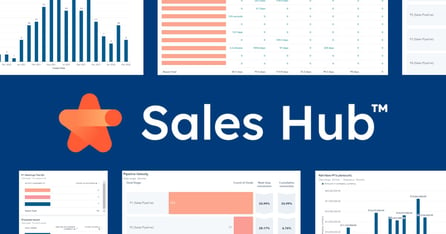Generative AI: Ideas and Counsel for B2B Company Leadership

Since the release of ChatGPT in late 2022, the media, marketing, and business world at large has been abuzz with speculation on the consequences of Generative AI (GAI). Executives have raced to learn about this technology and called on their organizations to begin implementing GAI tools to improve their efficiency, lest they get left behind by their competitors.
Half a year later, we can see a little more clearly the opportunities and risks presented by GAI. While the hype ebbs and flows, it’s clear GAI is not the magic bullet (at least not yet) that some have hoped or claimed it would be. However, what’s also clear is that there's no passing trend.
GAI is here to stay, and as it is gradually adopted and used to augment existing workflows, it provides big opportunities for those B2B organizations who know how to apply it – and navigate the new risks that it brings.
In this article, we want to provide some ideas, counsel, and guidance to leaders of B2B companies in cutting-edge industries – from cleantech and agricultural tech, to manufacturing and high tech industries — on what they need to know about using GAI in their organizations.
The hype around generative AI
When it comes to generative AI (GAI), a lot of the hype has been around its use in marketing content — and for good reason. Generative AI is a powerful tool for augmenting your company’s content creation, but it’s still just that: a tool.
Content creation can’t be outsourced to AI just yet. As AI makes more generic content easier to create, it does so for everyone equally, devaluing it. AI tools can help in the process of creating certain types of general lead gen content, such as some SEO posts, but it can’t fully take over. It can’t — and won’t be able to — create the type of unique thought leadership that can help set your brand apart, build credibility, and drive leads further down the funnel.
Large Language Models (LLMs) which power text-based generative AI tools such as ChatGPT are only as good as the data they’ve been trained on. They aren’t up to date; they don’t have in-depth, industry-specific knowledge; and they don’t have the unique insights into your customers and industry that you do.
Premium content that creatively expresses an insightful viewpoint still rules the day, and as AI content floods the internet, it will only become more valuable.
But that doesn’t mean generative AI tools can’t help in the process. GAI can be a good input source, it’s just not sufficient on its own. To learn more about using generative AI for content, check out our articles on AI for content generation, AI for B2B content marketing growth, AI and the future of SEO, and using AI to refresh your content for SEO.
GAI can be a powerful research assistant
If you’re curious how you can get your hands dirty with generative AI right now as an executive or manager in a B2B industry, GAI makes a powerful research assistant.
If you want to learn more about a topic, including the uses of AI, why not ask a generative AI tool such as ChatGPT itself? Not only will it provide you with information, you can get hands-on experience.
The dialogue interface of tools such as ChatGPT, coupled with a wide knowledge base, makes them ideal for digging into a topic. With a Google search you might enter a query or few, read some of the top results, click a few links, and call it a day.
But with a tool like ChatGPT, you can leverage the dialogue to dig more into a given aspect of a topic, ask it to format information in a given way, have it summarize information, and much more.
When it comes to explaining and formatting textual information, it can do almost anything you ask, so give it a try. However, be aware there are some limits and pitfalls.
Know the risks when using generative AI
GAI is a new and developing technology. While outputs can be very useful, they may also contain errors, be misleading or deceptive, or be trained on inaccurate data. They also can “hallucinate” (making things up and presenting them as facts), or generate outputs that may be unethical, biased, or offensive.
When using a GAI tool, you don’t have any insight into the data set or parameters the underlying model is trained on – you’re dealing with a black box that can confidently present outputs with no underlying basis in reality, which can easily be overlooked as a user accustomed to dealing with vetted information.
These risks are important to know as a user. They’re even important to know as an executive looking to integrate GAI into essential company processes and external communication.
These risks are heightened when output is used in circumstances in which accuracy or fairness is essential (such as hiring and employee review), communications and decisions around your product or services, or in any situation involving important decisions or potential legal consequences.
Four most common risks associated with the usage of generative AI
1. Accuracy issues
The results of any AI system, including analytical outputs from GAI applications, might not be accurate. Factual claims need to be double checked by a human.
2. Content originality and copyright issues
When using GAI to create public-facing content for your B2B company, the outputs will not be original, may be used in other places, and may be penalized on platforms such as Google Search. Copyright issues, particularly with GAI images, are still being hashed out.
3. Bias and ethics
Bias is an ongoing issue with AI systems, and the ethical implications of using AI are complex and varied. According to the Wall Street Journal, many company leaders are taking AI bias issues seriously, with some even foregoing AI for certain applications due to the risk.
4. Data security, cybersecurity, and privacy risks
A survey by Salesforce found that data security risks were the top concern among IT leaders, with 79% concerned about the security risks of GAI. These risks include a number of different angles, including proprietary data leaks into GAI tools (ChatGPT saves all user prompts), poor security and improper data storage within GAI applications, and using flawed code generated with GAI tools.
Mitigate the risks
These risks can be mitigated by best practices that emphasize vigilance, scrutiny, and caution, including vetting the usage of GAI tools before deployment, training employees on the safe and proper use of AI tools, creating company guidelines around GAI usage, reinforcing cybersecurity best practices, and using security tools designed to prevent oversharing with GAI applications.
How to start using generative AI
Keeping these risks in mind, how can your organization begin to apply GAI beyond augmenting marketing content? A good way to start is by clarifying your company’s stance on GAI usage and ethics, then putting it to use internally where your employees can get used to using GAI tools without the higher stakes of external-facing communications. Here are four ways your business can begin using GAI today.
1. Create a generative AI playbook for internal and external AI use
The possibilities of Generative AI are exciting, and along with the hype surrounding it, you probably want to get going right away and avoid being left behind. But keep in mind the risks we outlined above.
We highly recommend drafting a GAI playbook that outlines guidelines and principles around AI use in your organization, for both internal use and external-facing content.
The first version of your playbook can be simple, but it should provide some guardrails and address the risks listed above. It can be as basic as a list of bullet points that addresses how you use AI within your company, who is accountable for outputs created by AI tools, and what limits you are placing on AI tools.
As an example to start, check out the Marketing AI Institute’s Responsible AI Manifesto, which you can use as a starting point (it’s licensed under Creative Commons and meant to serve as an open template).
When drafting your playbook:
- Include any relevant stakeholders in your organization. While this may depend on the size of your company, it’s a good idea to bring together representatives from sales and marketing, operations, IT, HR, and legal to provide feedback on possible use cases and the ramifications in different organizational areas.
- Consider how GAI is used now but also how it may be used in the future. List out the ways you can use GAI internally and externally today, but also brainstorm potential use cases you envision for the future, to prepare for risks ahead.
- Keep it a living document. The field of AI is constantly evolving, and revisiting and updating this document on a regular basis can help your organization assess the opportunities and risks in new developments as they arise.
- Share it broadly across your organization. Make sure everyone is aware of and has access to the document, or at least the parts relevant to their job. You may even want to use it as the basis for training videos, a live session, a Q&A, or other formats to engage your team on questions around GAI usage.
2. Streamline and automate internal processes
Automate workflows
Generative AI can be used to streamline, and in some cases, automate workflows in different areas throughout your organization. You’re probably already familiar with its uses in content creation and marketing automation processes (if not, check out our blog posts on the topic linked above).
Augment internal processes
GAI can also be used to augment internal processes in software development, customer service, and sales. Developers can use GAI tools to generate and audit code, customer service can use GAI chatbots and GAI-created email templates to respond to customers, and salespeople can use GAI to create collateral, generate emails, and more.
Connect with Zapier for advanced multi-app workflows
GAI can also be used to augment general workflows that aren’t specific to particular functions. Using a tool such as ChatGPT’s Zapier plugin and/or Bardeen.AI, you can leverage GAI tools to connect the various applications your company uses internally (such as Google Workspace, Slack, and more) to create automated workflows, with an action in one app triggering an action in another.
With Zapier, you can even interact with over five thousand different work apps without even leaving ChatGPT. Other tools that allow similar automation functionality are being developed and released.
The best way to find where GAI can automate internal processes is to work directly with departmental heads themselves to see which processes can be streamlined with GAI.
3. Use GAI for research and analysis of large data sets
While most of the conversation around GAI tools like ChatGPT is focused on their ability to generate text, they can also be incredibly useful for working with data. GAI tools can generate natural language explanations and summaries of data, making it easier to understand and act on data sets without heavy technical processing.
Model complex data systems
Generative AI can be used to model complex systems in order to understand data and make better decisions, and can also automate the creation of data visualizations that are easy to understand. One example of this: The popular data visualization software Tableau partnered with Salesforce to develop Tableau GPT and Tableau Pulse, next-generation tools that incorporate AI functionality.
Augment data sets for better forecasting
GAI can also be used to create synthetic data that mimics real data in order to augment data sets to improve analytical models, as well as simulate the impact of various strategies, assisting B2B decision makers when it comes to strategic forecasting.
Expect to see conversational AI capabilities increasingly incorporated into your business intelligence tools, allowing you to interact with data more intuitively using natural language queries, and automatically generating reports and visualizations when needed.
Advanced data interpretation and analysis
To get started, you can even explore data using tools like ChatGPT. If you want to really dive in, you can use a ChatGPT plugin such as OpenAI’s experimental Code Interpreter, which allows you to upload data files and invoke Python to perform regression analysis and descriptive analysis, seek patterns, and even create visualizations — all without having to write or even know a line of Python code.
This is a preview of what’s to come with GAI-enabled data analysis for non-technical stakeholders and leaders.
4. Build an internal knowledge base that runs on GAI
LLMs excel at transforming data from one state into another and generating text. While most of the focus goes to creating marketing content, consider using GAI to create or update and augment your internal organizational knowledge base — especially since copyright and SEO issues that impact external content may be less applicable to internal-only information.
There’s no need for knowledge to remain trapped in the heads of your employees. While knowledge sharing in the organization has long been an ideal, it hasn’t been practical to allocate your skilled employees’ valuable time to creating knowledge base articles, especially if writing is not their skill set (let alone keeping them up-to-date and relevant).
Now, using a GAI tool, employees can create articles with nothing more than a set of bullet points or whatever notes they have. The tool can format them into a properly structured knowledge base article.
Summarize and create frequently asked questions about your business
Generative AI also excels at summarization, question and answer generation, and categorization. Have a GAI tool summarize existing text content into more easily digestible formats, such as by turning a complicated policy document into a set of steps for an employee to perform to resolve a given situation.
Your organization likely has a wealth of information in different formats — these can now be easily converted into other formats. Generate questions and answers based on existing content in the knowledge base: doing so will help to ensure that the knowledge base is addressing the most common questions.
Once in the knowledge base, use a GAI to categorize content based on topics or keywords, making it easier for users to find the information they need.
You don’t need to navigate the future alone
Navigating the opportunities and risks presented by technologies such as Generative AI isn’t something you need to do alone.
If you want assistance in figuring out how to sharpen your marketing efforts — including by leveraging GAI — New Perspective is here for you. We've been helping clients increase traffic and drive revenue for two decades, and our team of marketing experts is at your disposal.
We would love to talk about how to solve your challenges in marketing, sales, and using GAI. Schedule a free consultation to learn more.




